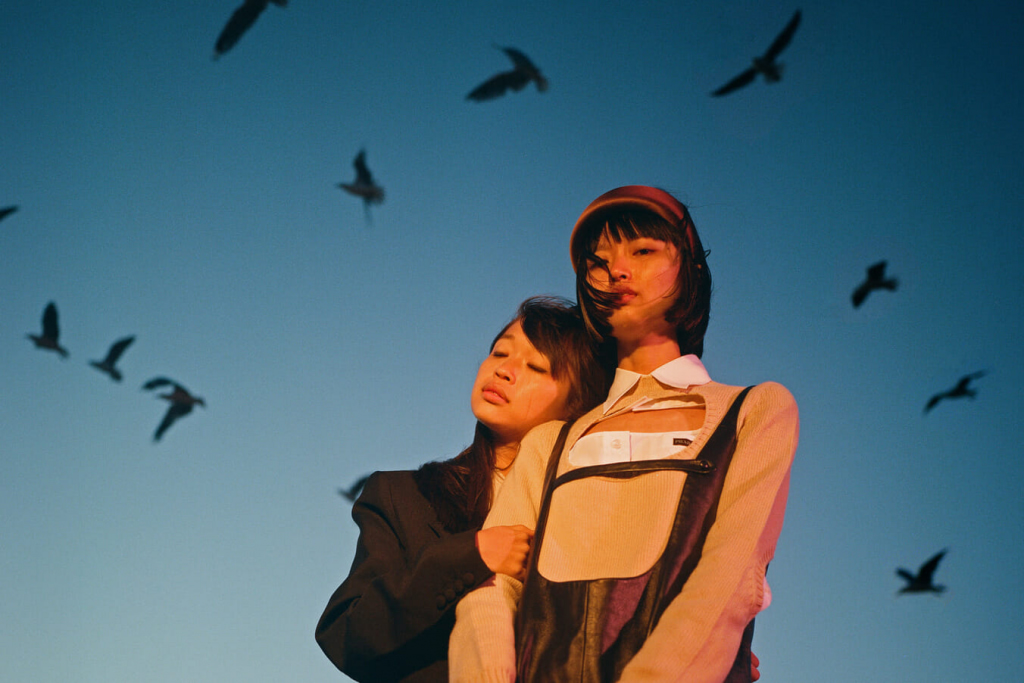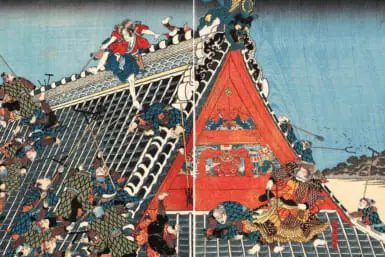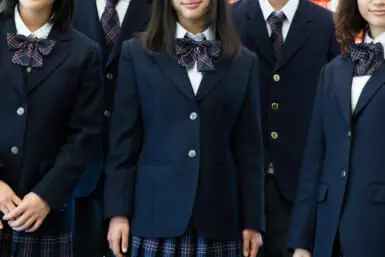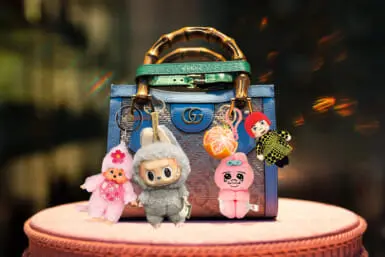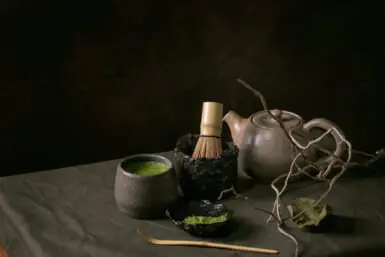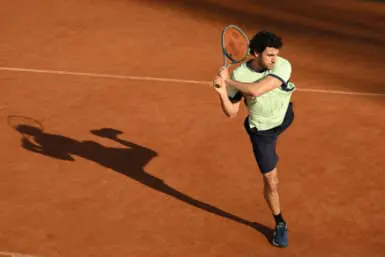As if pulling back the very fabric of reality, James J. Robinson’s dreamy photos let us peek into liminal crevices. In there, you can see the extraordinary beauty in ordinary scenes – barbershops, parking lots, the fishmonger, someone’s toilet — drenched in soft neon, so plausible yet so feverishly unreal. It’s as if you woke up, dazed, hoping to tell your friends about that half-remembered dream. Robinson’s subjects — from Rihanna to his grandmother or a chainsaw-wielding nun —are a kaleidoscope of dream material. Captured on 35mm film, the shots feel both old and timeless. It’s pure magical realism, often set after dark, and always blurring the lines between reality and fiction.
“It’s just trying to find poetry in everything,” Robinson muses on his aesthetic and his gaze. “By poetry, I mean seeing beauty in the world.”
He doesn’t like shooting in studios — it’s too clinical. Instead, he goes to places where he spends most of his time anyway. He invites the viewers into the intimate familiarity of those spaces, hoping to light a spark of curiosity in people to get them to pay attention to their surroundings. Whether it’s the symmetry of supermarket shelves or the shimmering scales of fish on ice, he wants everyone to start seeing things in a new light.
TW caught up with Robinson online while he was in the Philippines location-scouting for his next film. We asked about what drives him to create art filled with both magic and realism.
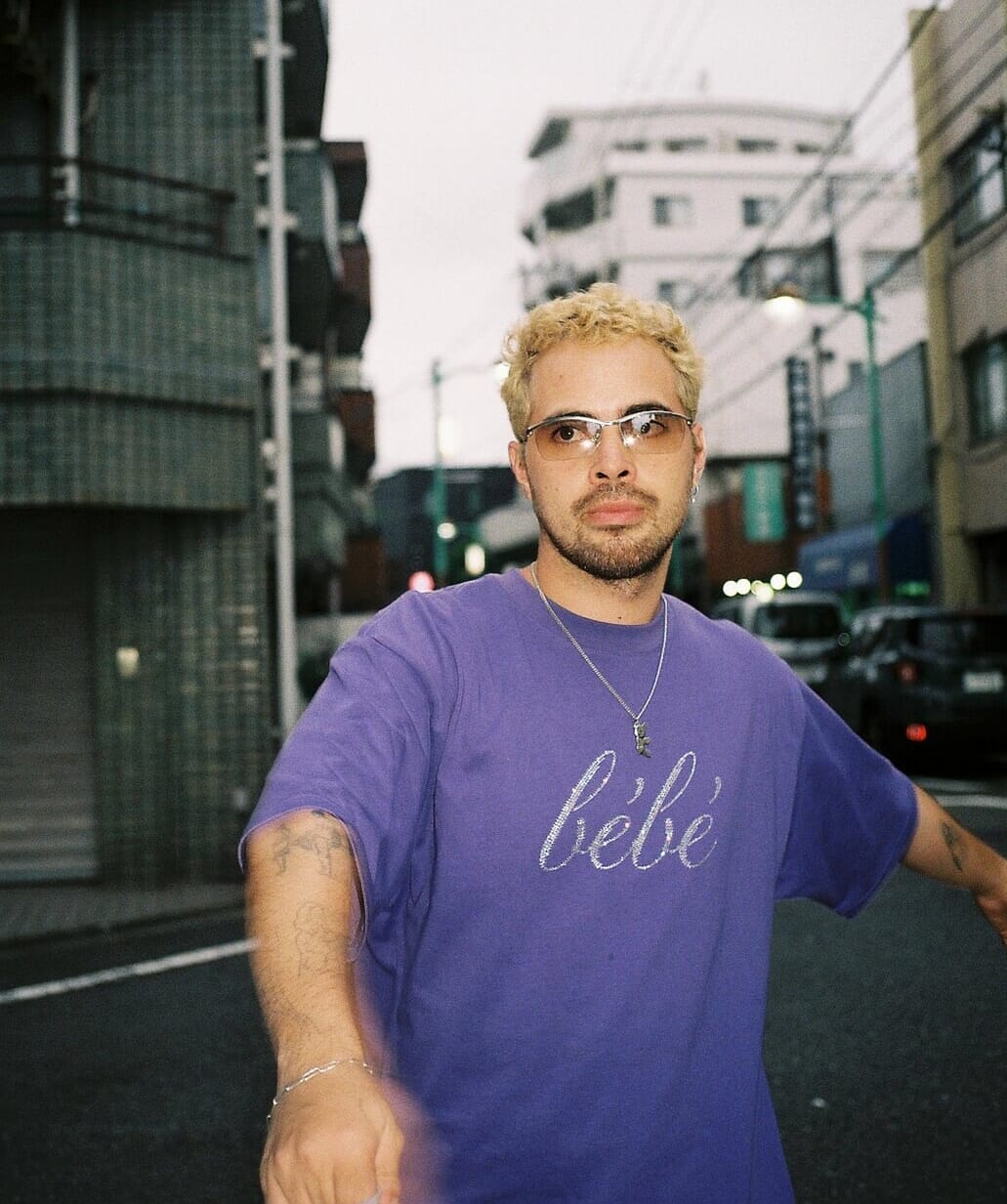
Photo by Rachael Morrow
Shine a Light and Let It Burn
Robinson’s art unfolds organically, spontaneously, even though it is very purposeful and driven. In several interviews, he has recalled his first steps in photography, inspired by Tumblr, playing around with a camera. In just a few years, he has gone on to shoot for clients like Adidas and Burberry, for celebrities like Megan Thee Stallion and Kylie Jenner, and for editorials for the likes of Vogue, GQ, The New York Times and more.
Robinson’s personal work, in particular, poses questions, disrupts and challenges engrained notions, and it’s socially engaged. He maintains that his work, both private and advertorial, has always been inherently political, just because of who he is — namely half-Filipino and queer.
Ever since 2016, Robinson has tried to wrestle with the unethical nature of the fashion industry in which he works and made his name. His photo book After Hours, with scenes from across Tokyo, Seoul, Sydney and Melbourne, aimed at critiquing energy consumption by lighting used in the fashion industry. Shot after midnight, these fashion shoots recycled the lights left on by retail stores. He has stayed true to his efforts towards sustainability. In 2021, he shot the cover for Wonderland magazine using no lighting equipment save for the residual light from shops on the street. He has also been trying to find more ways to reduce the carbon footprint of his photo shoots, employing plastic-free sets, LED lighting and carpooling.
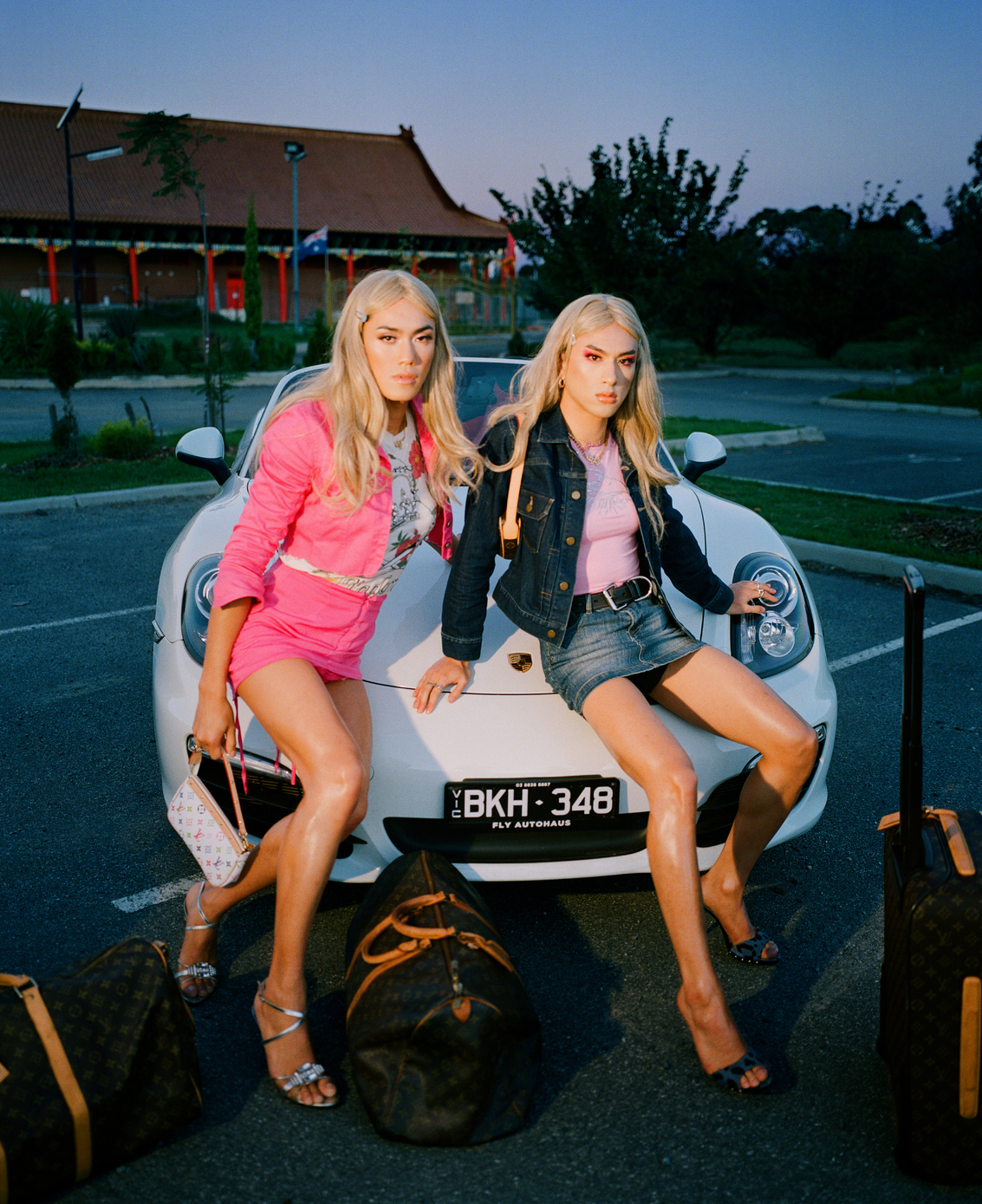
Over the past two years, however, Robinson has pushed his social commentary more prominently into the public sphere. In the spring of 2021, Robinson shot a series of photos recreating scenes from the comedy movie White Chicks with Asian models. This was more an homage to a movie that resonated and empowered, but this work later became the seed for “On Golden Days,” where he took more of a critical look at the film industry.
That same year, the photographer broke into St. Kevin’s, his former same-sex Catholic high school, and burned the school’s uniform blazer as a protest against the rampant toxic masculinity culture. He was severely bullied and traumatized during his time there, which he opened up about in his TED talk in 2019.
Part of Robinson’s statement read: “St. Kevin’s is a bubble where privileged young men can rehearse oppression without consequence, before graduating with flying colors into public.” He made it clear that his protest was beyond his personal experience at his school, but aimed at other similar educational institutions that perpetuate these issues across society. The photos of him burning the blazer and kissing his partner went viral.
This also marked a new, bolder exercise in freedom for Robinson, who started turning down some commercial work and dedicating himself more to the stories he wants to tell through different media: writing, photography and especially film.
“I don’t want to be tied by money or celebrity, or fame, or anything. I’ll sacrifice any of that as long as I’m saying things with integrity,” he says.
Robinson has been actively trying to reckon with his own privileges and create welcoming sets full of diverse people. He works to make sure no one is bullied, threatened or harassed during production. The creative industries can be very exploitative, competitive and damaging, so looking out for people is paramount. He says that he also tries to pass jobs and opportunities to women and other marginalized groups.
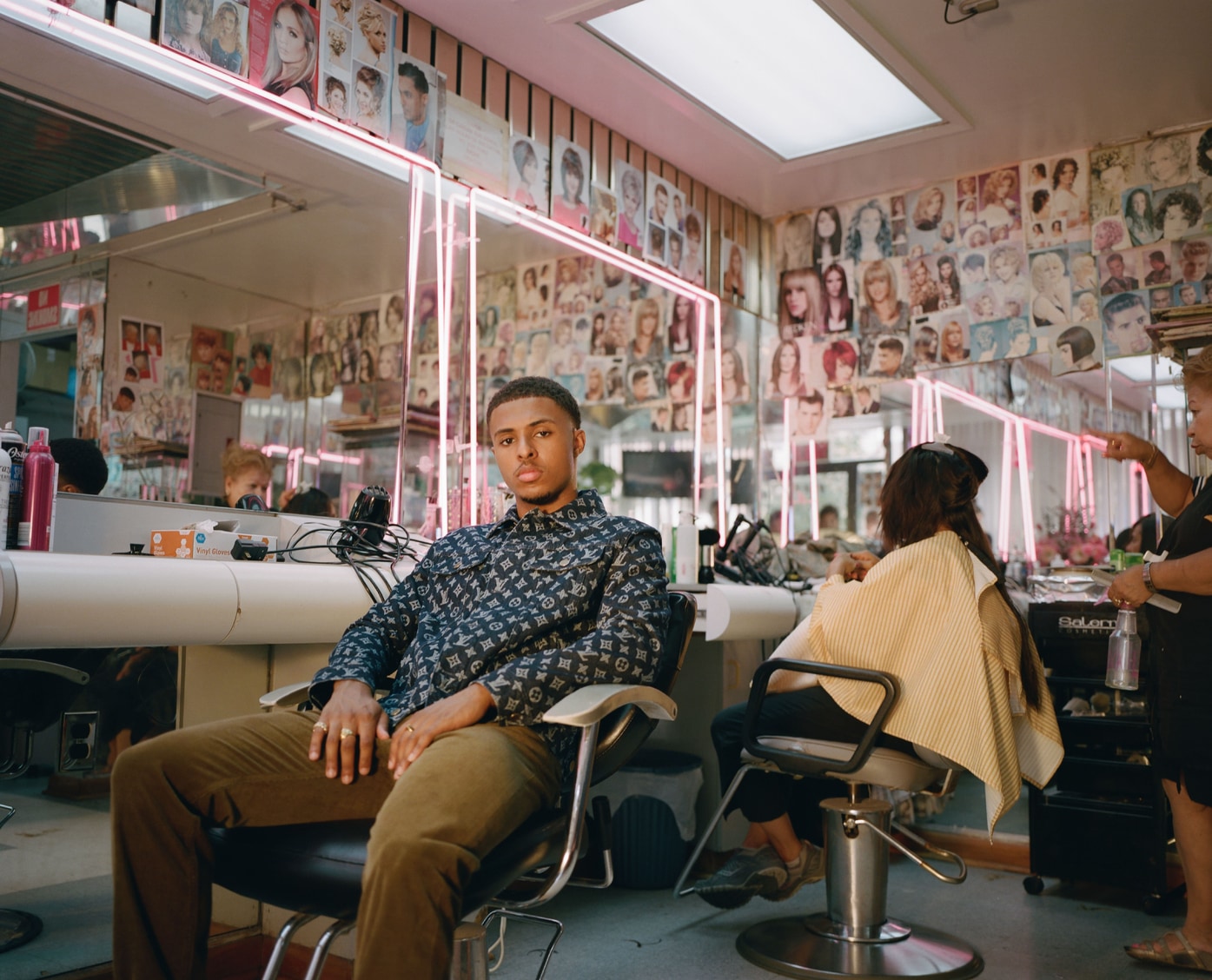
On Golden Days
The talented photographer splits his time between Australia and the US, and everywhere his projects take him in between. Robinson’s latest exhibition “On Golden Days” took place in Tokyo in October and marks his biggest personal photography project up to date. His goal was to deconstruct the architecture of the nostalgia industry, prompted by the recent resurgence of 20th-century culture, such as Stranger Things on Netflix or Tarantino’s Once Upon a Time in Hollywood. The work challenges the overly idealized and racially homogenous imagery of the past.
“‘On Golden Days’ takes the absurdity of glorifying the past and flips it on its head–taking a leaf out of the white artist playbook that aches to rewrite history, but doing it with a massive, glorious and exclusively Asian cast,” Robinson’s artist statement reads. “We ask audiences to reflect on the ethics of nostalgia, and question — without the just retelling of history, who benefits?” the statement concludes.

From “On Golden Days”
Robinson clarifies that the message was slightly reframed for the Tokyo exhibition, as Japan’s nostalgia imagery features its own people. Instead of solely focusing on the shortcomings of nostalgia, it also aimed to educate viewers about the darker past of Australia and its discriminatory immigration policies.
“I realize Japan is complex too,” says Robinson, acknowledging that the country has a dark past, particularly in relation to the Philippines, his mother’s home country, and a culture that played a big part in his own upbringing. At the same time, he shares that he is inspired by Japanese philosophy, art and cinema that he grew up consuming.
Moving past critique, “On Golden Days” had a unifying aspect too. Robinson recalls the shooting process as community-building, the network stretching in all directions as models started bringing their parents and relatives to pose for photos too. When they all came together for the exhibition opening in Australia, it was a heartfelt celebration. Different groups of people with Asian heritage were connected under the same umbrella. On top of everything, the project was supported by the Australian Government, so Robinson was happy he could pay people for their efforts too. He remarks that sadly too often people have to work for free to tell their stories and pass on a message.
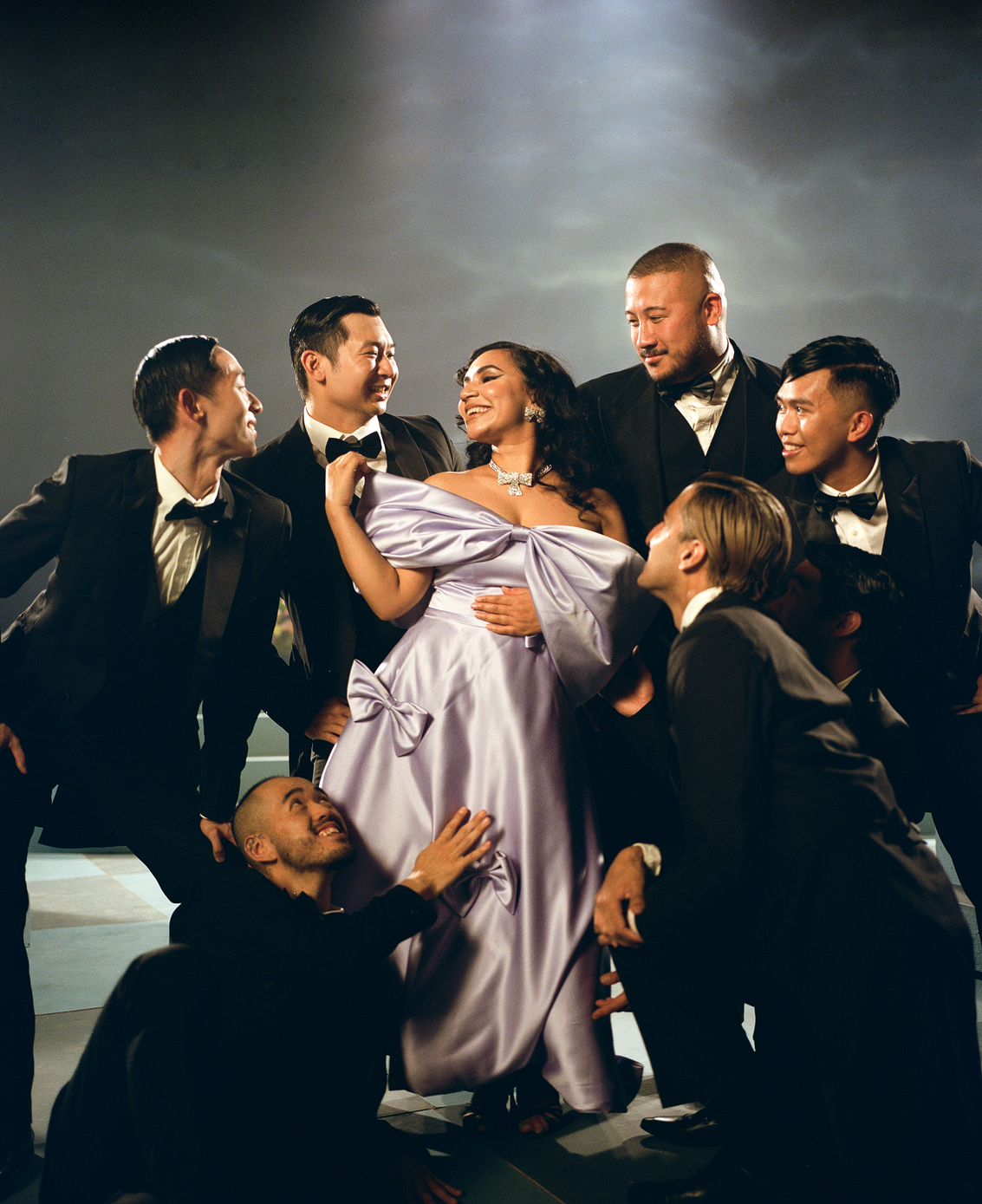
From “On Golden Days”
The Tokyo exhibition opening, in contrast, initially looked like it would be a more lonely affair. Japan’s borders were still closed at the time, so Robinson came with only two other collaborators on a special visa to enter the country. Almost miraculously, however, that network of Asian Australians pulled their international strings.
“It was beautiful, people involved in the project told their friends and relatives, and they told their friends and relatives … and somehow it just bled across the Pacific. And we still had that same sense of community and that same response of bringing people together in Tokyo,” says Robinson.
Touched by this ever-stretching transnational connection around the world, the similarly multidisciplinary limitless artist vows to come back to Tokyo: to shoot photos, to make more friends, to shine a new light on all too familiar spots, and — of course — to show us the daily poetry in the little gaps between reality and magic.

